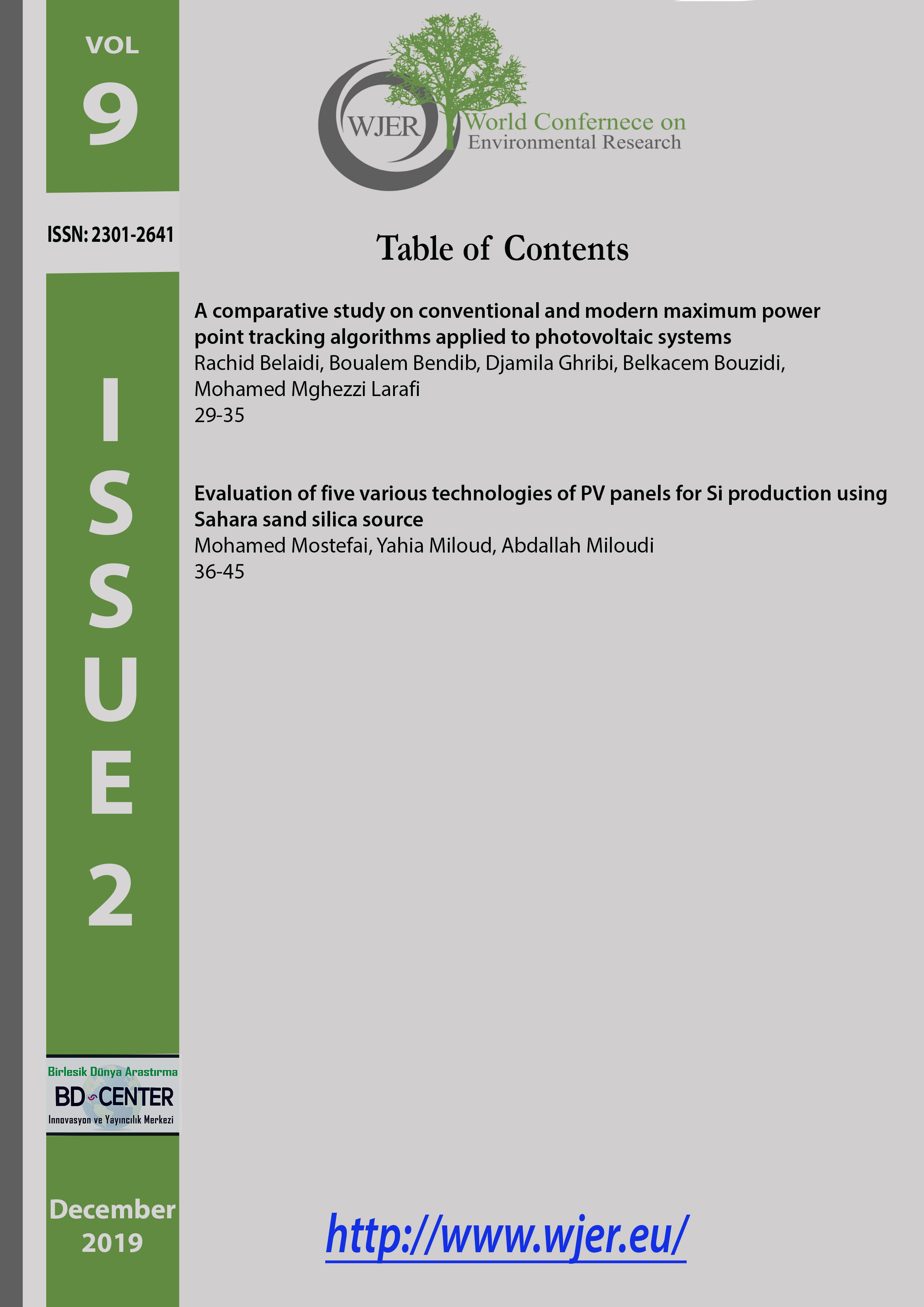A comparative study on conventional and modern maximum power point tracking algorithms applied to photovoltaic systems
Main Article Content
Abstract
The main goal of maximum power point (MPP) tracking control is to extract the maximum photovoltaic (PV) power by finding the optimal operating point under varying atmospheric conditions to improve the efficiency of PV systems. In recent years, the field of tracking the MPP of PV systems has attracted the interest of many researchers from the industry and academia. This research paper presents a comparative study between the modern fuzzy logic based controller and the conventional perturb & observe (P&O) technique. The comparative study was carried out under different weather conditions in order to analyse and evaluate the performance of the PV system. The overall system simulation has been performed using Matlab/Simulink software environment. The simulation results show that the dynamic behaviour exhibited by the modern fuzzy controller outperforms that of the conventional controller (P&O) in terms of response time and damping characteristics.
Keywords: MPPT, photovoltaic system, fuzzy logic control, P&O algorithm.
Downloads
Article Details

This work is licensed under a Creative Commons Attribution 4.0 International License.
World Journal of Environmental Research is an Open Access Journal. All articles can be downloaded free of charge. Articles published in the Journal are Open-Access articles distributed under Attribution 4.0 International (CC BY 4.0)
